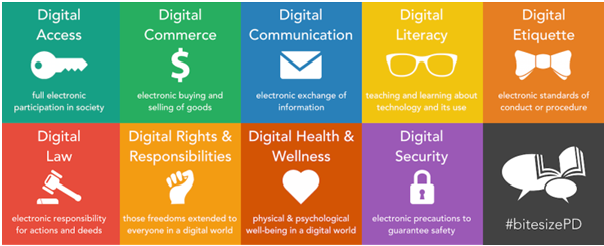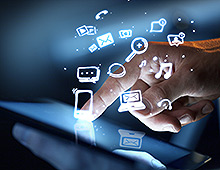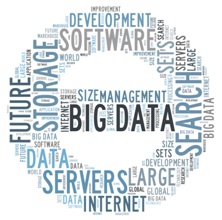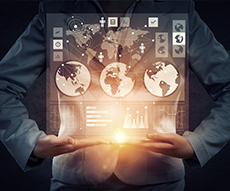The power of digital transformation is getting ingrained in our everyday life and is strongly impacting the way we live, work and communicate with each other. Digital plays a key role in all our lives with the rapid entry of disruptive technologies, multiple electronic devices and the internet and most of our time is spent accessing all these devices and technologies. Currently, our life comprises of two components: the real life, where we interact with physical elements – people around us, and the virtual universe with connected data and information encompassing the content that we share online and consume as well.
Presently our virtual world and the real world are interconnected and overlapping at the same time, making it impossible to differentiate and segregate, and with every step, the virtual world is intercepting and substituting actions and elements in our real world.
We are now – digital citizens of a global digital country. It is a place where communities and networks are populated by virtual personalities sharing common interests and backgrounds. It is a place where nationalities, demographic identities cease to exist in certain cases and flair up in others.
However, digital citizenship goes one step further by ensuring that the digital citizens empower themselves and each other using technology appropriately.
Nine Elements of Digital citizenship:
Digital Access
Ensuring equal access to technology and expanding the digital footprints to everyone in the society. The widespread reach and access to social platforms like Facebook/ Twitter and concepts such as Bring Your Own Device (BYOD), e-Books, introduction of programmes such as Digital India, Smart City, Digital Village are prominent steps to attain this equal digital access to every citizen.
Digital Commerce
Digital Commerce is all about selling and buying of goods and services using the platform of internet, mobile networks and commerce infrastructure. It facilitates online market transactions and protects the buyer, seller and the medium from unlawful activities. The recently introduced Government e- Market Place, the platform where Government officials can purchase goods is an example of this. The reach of prominent e-commerce players such as e-bay, Amazon are also a testimonial for this.
Digital Communication
Digital Communication is all about facilitating and educating digital citizens on effectively using online channels to communicate and collaborate with each other. The introduction of emails, mobile phones, Skype, Teleconferencing and other modes of Unified Communications are the steps that enable citizens to step into the world of digital communication.
Digital Literacy
Digital literacy is about training and educating citizens about the essential technology elements, 8C’s- Cultural, Cognitive, Constructive, Communicative, confident, Creative, Critical, Civic aspects. It includes finding, sorting, evaluating, managing and creating information in digital format. Digital literacy is essential to create an all-inclusive society connected by the World Wide Web.
Information designs, Data visualization, Dynamic storytelling, Gamification using Media/ ICT/ Information Technology etc. are some of the digital educational methods that we use currently.
Digital Etiquette
Digital Etiquette is all about setting the right code of conduct in the digital world. It teaches the citizens to become responsible and maintain standards of conduct/ procedure beyond just creating technology rules and regulations. Cybercrime controls, awareness against cyber bullying, training about email etiquettes and corporate etiquettes are some of the means to attain public awareness on digital etiquettes.
Digital Law
The Digital law creates the awareness among the public to abide by laws and ethics of technology in a society, so that the actions and deeds can be controlled and foreseen. It takes care of the ethical standards of the digital technology usage and it is applicable to anyone that plays a key role as a contributor or consumer in the digital world. The laws abiding – software privacy, illegal file sharing, hacking, copyright infringement, identity theft etc. comes under this.
Digital Rights & Responsibilities
Digital Rights & responsibilities cover the basic set of rights and responsibilities that need to be imposed on a digital citizen. Every citizen needs to be made aware of his or her privileges and responsibilities in the digital world. Responsible usage of internet based on the location (eg: home/ office) and practices such as maintaining the originality of the content that is generated on the web, giving proper citations in the content, maintaining the confidentiality and privacy of data, incorporating encryption, e-signatures if required, etc. come under the purview of digital citizenship.
Digital Health & Wellness
Digital Health and Wellness requires making the citizens aware of the inherent dangers of technology, which can affect them physically and psychologically. The users need to be educated about these health issues and need to be trained to protect themselves from these issues. They need to be aware of the significance of maintaining a good posture and sensible usage of time in the digital world rather than getting addicted to the virtual world. Awareness should be given on other health issues including, obesity, and ear and eye sight problems and so on.
Digital Security
Digital Security is all about protecting ourselves from digital world fiascos by becoming responsible citizens who protect information from external disruptive forces. It is imperative to possess the right digital security posture for protecting our personal information or business/ customer information. Protecting our online identity, creating strong passwords, implementing proper protection strategies for virus and malware, updating them at regular intervals and keeping a defense in depth approach comes under the Digital Security aspect.
Conclusion
It can be safely said that digital citizenship will only get more pronounced in the coming times. Our identity itself will essentially include elements from the 9 Elements of Digital Citizenship.
Our present connected world has already started blurring the boundaries between the real and virtual identities. Now a days, a person’s virtual identity has become as important and inseparable as his real one. The 9 Elements together holistically describe the components of a person’s digital membership.
Enabling the 9 Elements will help governments realise the synergies that digital transformation offers. For example, our very own Indian government has adopted Twitter and Android applications to allow citizens to connect to government services digitally. The “MyGov” Android applications inform curious citizens of programs and policies launched by the Central Government. It also seeks the citizens’ feedback on ongoing programs. The Indian Railways has developed state-of-the-art social media response teams to assist rail travellers as quickly as possible. This has led to vast improvement in traveller experience and swift rectification of issues. Taking the cue from these examples other Government bodies have come up with their own digital access and facilities.
Enhancing digital citizenship will clearly reap rich dividends for proactive countries. Meanwhile, digital citizens like us will see a parallel growth of innovations and inclusiveness for the taking. Like Morpheus mentions in “The Matrix” to Neo, “I can only show you the door, you are one who has to walk through”, we digital citizens are the ones who have to take the steps on this upward digital transformation journey.

Richa is a Business Consultant with 5 years of experience in varied domains. Her experience lies in Healthcare, Retail Banking and Governance, Risks & Compliance Products/ Services. She believes in exploiting and embracing digital technologies to keep abreast of competitive market landscape. Her work involves defining, analyzing, managing and eliciting customer requirements and providing leading strategic value-based products/ solutions by enhancing customer experience. In free time, she enjoys travelling, listening to music and exploring myriad potpourri of cultures.









